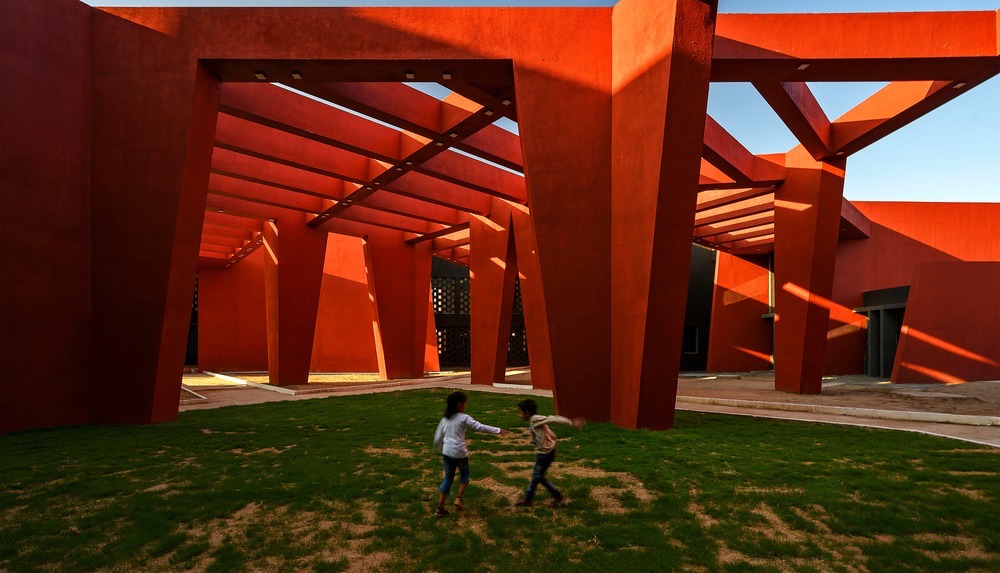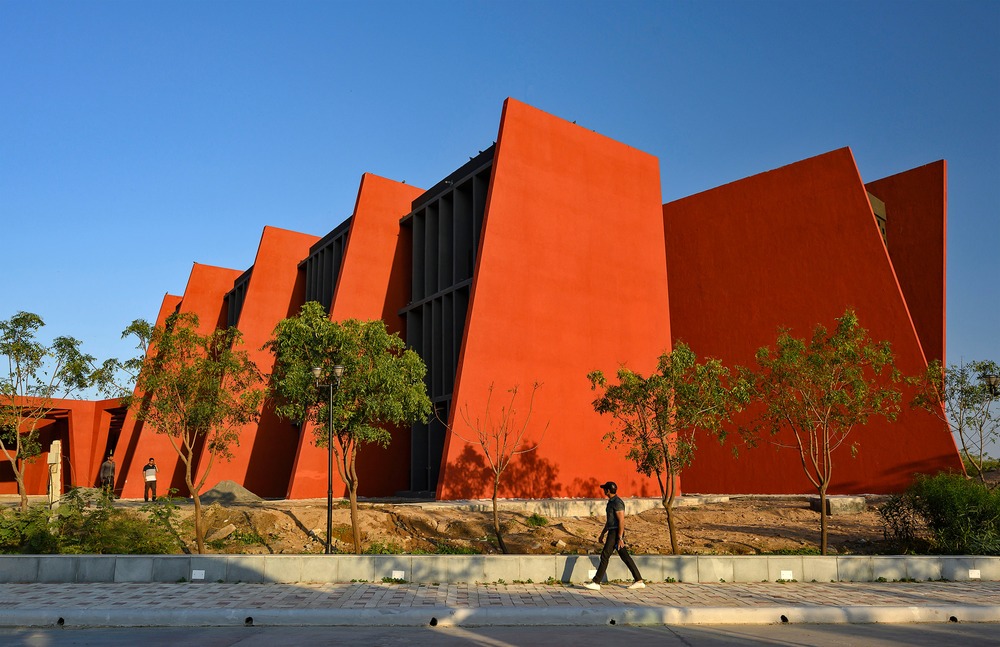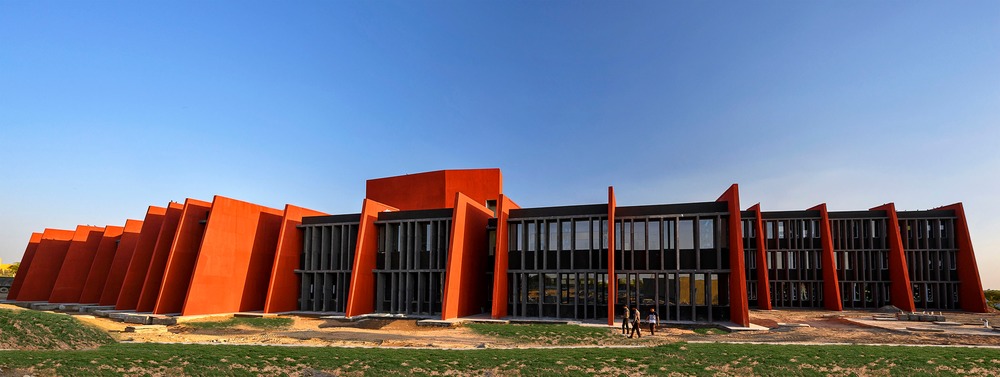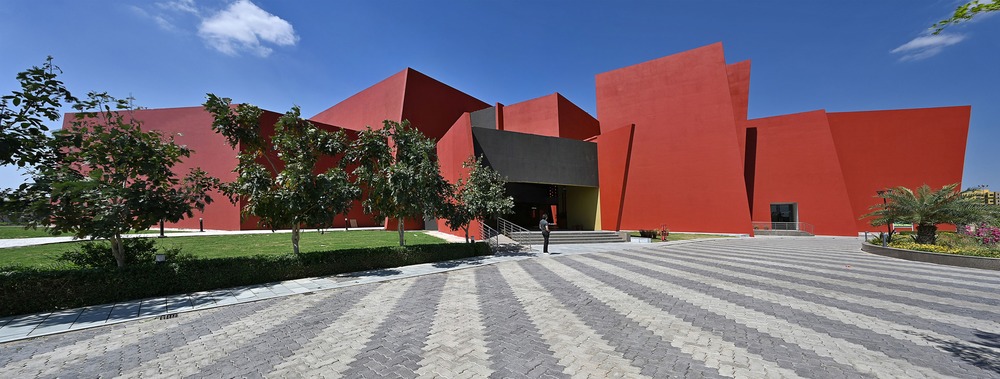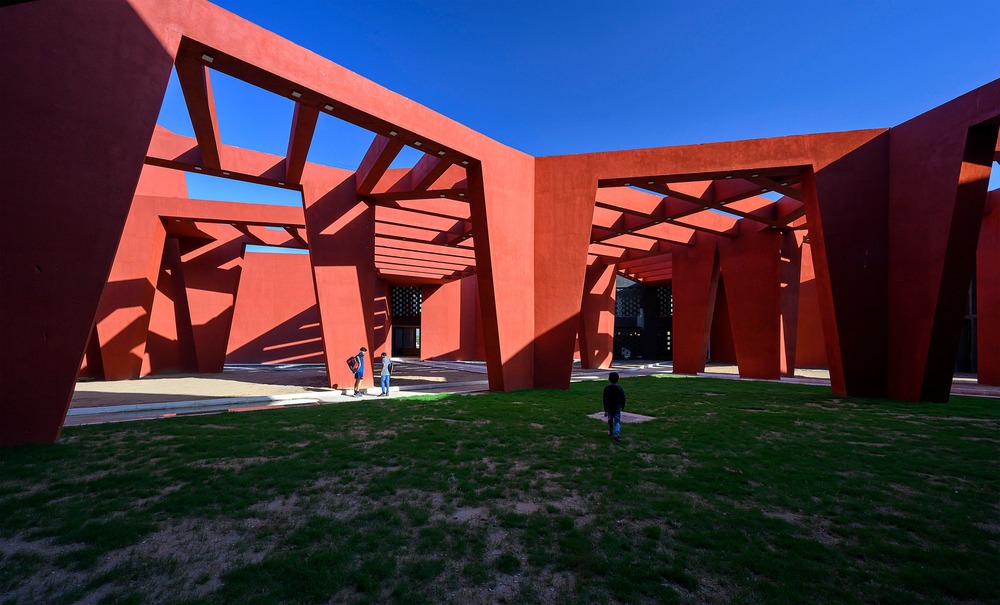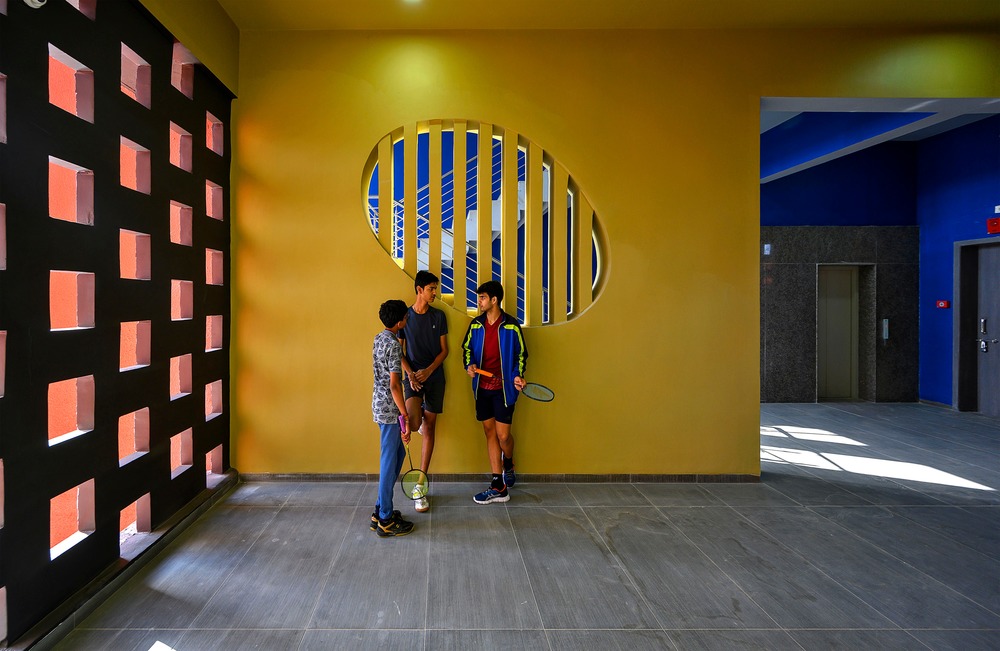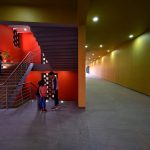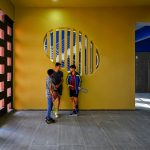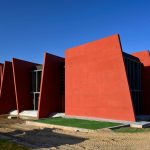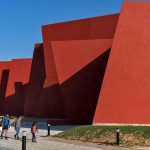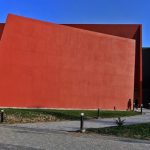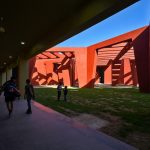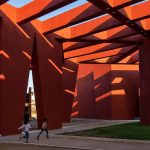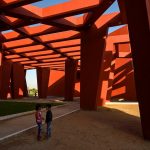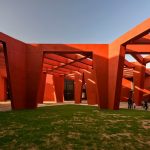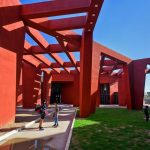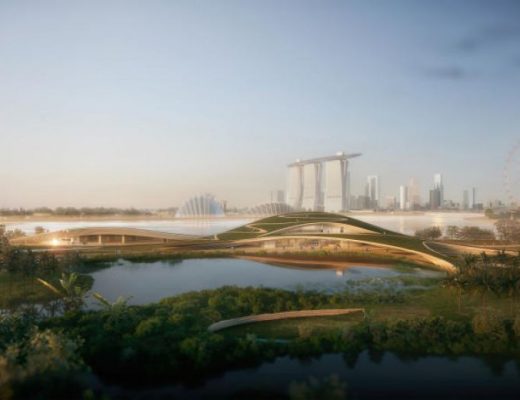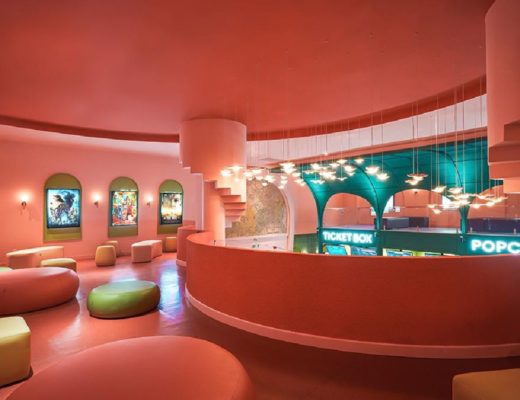India’s Sanjay Puri Architects has completed the design of The Rajasthan School in the country’s northwestern part. Imbibing the organic character of Indian villages and old cities, the 8,640m² Rajasthan School is a low-rise three-storey school sited on an area spanning 17,650m² with open, enclosed and semi-enclosed spaces of various volumes.
Keeping in mind the desert climate of its location with temperatures in excess of 35°C for the most part of the year, the project led by principal architect Sanjay Puri and assisted by Ishveen Bhasin, Ankush Malde, Pooja Prajapati, each of the classrooms is oriented towards the north to derive indirect sunlight.
The auditorium, primary school, and administration space occupy the southern side of the plot opening into a large sheltered open area towards the north which further extends to accommodate the secondary school classrooms, library, and a cafeteria. The entire school opens towards a multipurpose playground and athletics track on the northern side.
The semi-sheltered courtyard has multiple angular pathways, connecting the two parts of the school with landscaped play spaces that foster engagement. A series of linear trapezoidal frames and sun-breakers are located throughout the common passages, creating constantly changing shadow patterns depending on the sun’s direction throughout the day.
Using a passive, energy-efficient design strategy, the circulation in the entire school is through open, naturally-ventilated corridors that traverse and skirt the focal semi-sheltered landscaped court in the centre. Angled vertical walls act as sun breakers to reduce heat gain from the east, west and south sides, keeping the internal spaces cool. All the electrical power requirement of the school is generated by the residual energy of a cement plant nearby. In addition, water is also recycled and reused.
The organic layout creates a different character to each part of the school orientating each space with different views and perceptions. The layout is intentionally fragmented allowing open landscaped spaces to be interspersed with the school’s learning spaces.
See the full image gallery here:
- Stitched Panorama
Photos: Dinesh Mehta
You might also like:
Abu Dhabi school by Segond-Guyon takes horizontal approach amid high-rise towers
Samira Rathod-designed brick and terracotta school pays ode to children’s imaginative minds
Colourful kindergarten in Vietnam encourages safe exploration and nature-based learning

